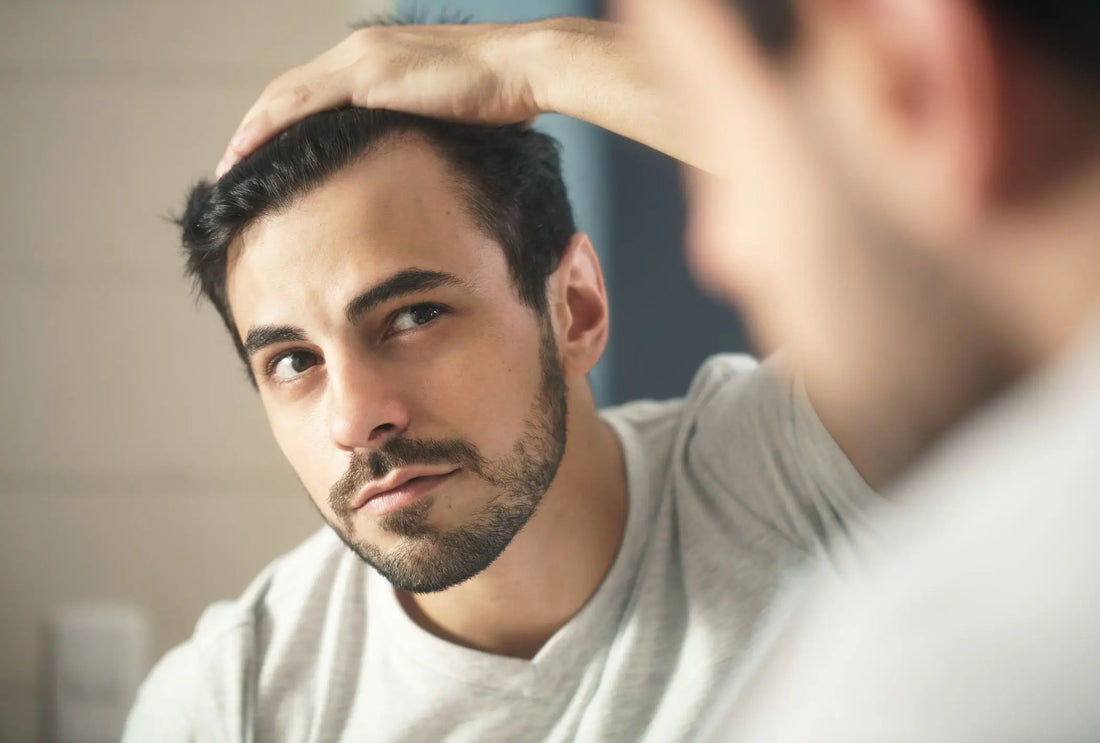The Future of Hair Regrowth: How 2dDR Stands Out Among Traditional Treatments

Introduction:
Millions suffer from hair loss, and it severely impacts people of all ages for confidence and quality of life. Due to years of study, over the years, several treatments have emerged (from topical solutions to oral medications, advanced laser therapies, and surgical transplants). Although some of these options have proven to work, they also have their setbacks, which include side effects, high cost, and an invasive procedure.
A recent which was groundbreaking approach has emerged in the scene – 2-deoxy-D-ribose (2dDR). In contrast to conventional therapies, 2dDR energizes blood supply directly to the hair follicles, increasing nutrient feed without resorting to hormones or other invasive measures. This very mechanism not only helps prevent unhealthy, weak hair but may also reduce the risk of the unwanted side effects usually accompanying conventional treatments.
In this article, we are going to compare 2dDR to the most common methods of hair loss treatment and their importance: minoxidil, finasteride, laser therapy, and hair transplants. We focus on examining the effectiveness, mechanism of action, and side effects of each treatment, and through comparisons with others, 2dDR may potentially be a good substitute option for people who want a safer and non-invasive treatment for hair regrowth.
Minoxidil
-
Mechanism of Action: It helps to increase blood circulation in the hair follicle region and helps to enlarge and support hair growth.
-
Effectiveness: Androgenetic alopecia and diffuse hair loss are well-studied and proven effective. However, the effect may be short-lived, and hair tends to fall out again when the drug is stopped.
-
Side Effects: It can cause scalp irritation, headaches, dizziness, and overgrowth of hair in other areas.
-
Comparison with 2dDR: Like 2dDR, Minoxidil stimulates blood circulation, but 2dDR may have an advantage in minimizing side effects as it works locally and less aggressively. Moreover, 2dDR helps follicle health in addition to stimulating growth.
Finasteride
-
Mechanism of Action: It stops the testosterone from becoming dihydrotestosterone (DHT), the primary perpetrator of male hair loss.
-
Effectiveness: Very effective in the treatment of androgenetic alopecia and also maintains or slows hair loss.
-
Side Effects: Reduced libido; erectile dysfunction; depression.
-
Comparison with 2dDR: Although targeting the hormonal mechanism of hair loss, 2dDR addresses improving blood supply to follicles, so it is a non-hormonal intervention and could be a safer choice for those who are worried about possible hormonal changes.
Hair Transplant
-
Mechanism of Action: Transplanting hair follicles from areas with dense hair to bald areas.
-
Effectiveness: The procedure is expensive and requires rehabilitation, but it is a permanent solution.
-
Side Effects: The possibility of unsuccessful transplantation, infections, scarring, and pain.
-
Comparison with 2dDR: 2dDR is a non-invasive method, while hair transplant is an invasive surgical procedure, which makes 2dDR more attractive for those who are looking for alternatives.
Laser Therapy (LT)
-
Mechanism of Action: Application of low-intensity laser therapy enhances blood flow in the scalp and stimulates hair growth.
-
Effectiveness: Research supports but may vary on results.
-
Side Effects: Generally, side effects are mild and include discomfort or irritation.
-
Comparison with 2dDR: Laser therapy and 2dDR are both trying to increase follicle blood supply. 2dDR may be more accessible and convenient (e.g., in topical forms), while laser devices require regular use and can be more expensive.
PRP Therapy (Platelet-Rich Plasma)
-
Mechanism of Action: Platelet-rich plasma injections that help stimulate hair regeneration and growth.
-
Effectiveness: Most patients may see some results, but effectiveness varies.
-
Side Effects: This might result in pain, swelling, bruising, as well as rare infections.
-
Comparison with 2dDR: Cellular regeneration is stimulated by PRP, while 2dDR improves blood flow and activates follicles. 2dDR is less costly and safer, while PRP may be more invasive and expensive.
2-deoxy-D-ribose (2dDR)
-
Mechanism of Action: Stimulating angiogenesis, 2dDR helps to improve blood supply to hair follicles and deliver more nutrients to the follicles. This also promotes good hair health and hastens growth.
-
Effectiveness: The data suggest that 2dDR may stimulate hair growth in cases of androgenetic alopecia.
-
Side Effects: Less severe than other treatment options.
Summary:
However, hair transplants, laser therapy, and PRP therapy are compared to 2dDR for the unique advantage of its local mode of action that increases blood supply to hair follicles without changing the endocrine system. This makes it a safer way of going about it if someone does not want side effects that can come with other treatments. Additionally, 2dDR is a non-invasive hair regrowth solution that is attractive to those seeking effective, safe, and convenient hair regrowth solutions.
